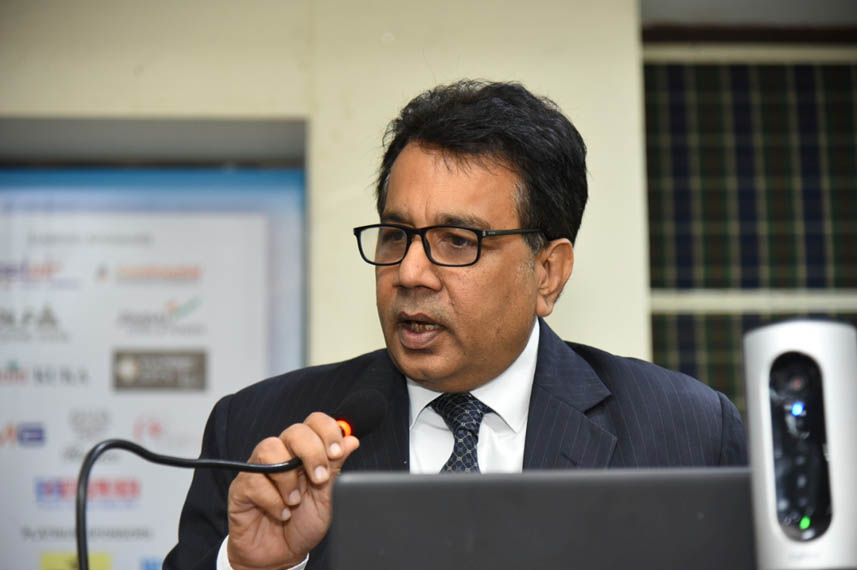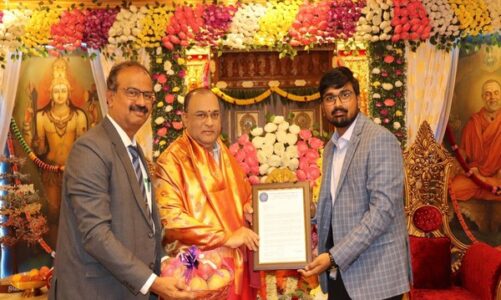Pranav Gupta Ashoka University’s asserts that technological systems, artificial intelligence, data, and information technology are going to continue to evolve, develop and become more important than ever.
With COVID-19, the normal discourse we have known for a long time has changed. On March, 2020, the government declared a state of lockdown in the country, shutting down offices, markets, educational institutions, and judicial courts; barring only essential services. Aside from airline, tourism, hospitality, and service industries that experienced significant declines in revenue and operations, the entertainment and sports industries also suffered. There had been a significant disruption in daily educational activities as a consequence of the outbreak.
As schools, colleges, and institutions were forced to close, lockdown procedures became more prevalent, putting the future of the younger generation at risk. Despite this, it unintentionally created many opportunities, such as distant employment and alternative education.
Pranav Gupta Ashoka University Founder opines, “The Covid-19 scenario did not result in the cessation of teaching, instructing, or evaluation; rather digital preparedness helped in the process of imparting education by utilizing a virtual platform that enabled students to continue with their academics. Most schools switched their whole curriculum to online learning in response to the outbreak.”
While many individuals and organizations were negatively impacted by the isolation and restrictions, other sectors of our economy began to thrive and prosper. To name a few, these industries include pharmaceuticals, healthcare, communications, the internet, and digital. In the past, supplemental technologies and facilities were supportive; however, the rise of Education Technology (EdTech) companies came as a surprise.
The majority of educational institutions transferred their curriculum and assessments online following the pandemic; as a result, they chose the most effective teaching method. “If we are to fully appreciate what is happening, we must recognize that the shifts to effective teaching strategy were sparked by fresh mindsets and attitudes that our society has newly begun to embrace.
When we use services like video chats, online grocery and meal delivery; we see that we are more proficient than ever before. Many of these newly adopted beneficial solutions are enduring even after the crisis has passed and will continue to do so. Information technology, artificial intelligence, data and core technological systems will continue to develop, evolve and become more crucial than ever”, asserts Pranav Gupta Ashoka University Founder.
There is no doubt that the academic life of students is changing. Education has evolved and is likely to continue to do so. The closure of school and college campuses due to the Covid-19 outbreak has altered the way we function as educators. A growing acceptance of digitization in virtually all operations, that were previously conducted within an educational institution’s premises, presents an opportunity to reconsider how many academic activities can be conducted digitally.
After Covid-19, blended and hybrid learning models integrated remote and in-person learning by combining digital elements with in-person components. The importance of computers and other related technologies in modern communication and commerce means that integrating technology into education helps students prepare for success in the workplace. By engaging in a mixed learning environment, students learn about technology as well as the curriculum being studied.
“The purpose of mixed learning models is to consistently provide better outcomes by fostering a dynamic learning platform that provides educators freedom in everything from scheduling to varied form of resources and communication. Such a learning strategy produces a unified classroom setting where the requirements of all groups of learners can be satisfied by rendering in-person and virtual education complementary.
Depending on what is best for their students, one may alter the material, technology and teaching strategies. To consistently improve the effectiveness of teaching for students, they can use new techniques and make adjustments to the existing ones”, highlights Pranav Gupta.
In the past, a number of institutions have adjusted their educational strategies to meet the needs of their students. A combination of face-to-face education and online learning is offered to accommodate every student, and both formats are expected. However, everything has its shortcomings.
As a result of these cultural changes, identity shifts, and expectations placed on educators and administrators, the post-pandemic digitalized structure of education risks escalating already existing disparities in digital technology usage. The transition to online involvement, perhaps a definitive one, presents enrollment, retention, and advancement issues for students. “Covid-19 acted as the significant force behind digitization of education. It demonstrated the significance of using technology as an ally in education by highlighting the benefits of digital ingenuity and communication channels.
We are grateful for technology and aware of its advantages, unending possibilities and its impact particularly to our futures. Although we are apprehensive about plans for its transformative makeover of our teaching, learning and evaluation process; there is a chance to substantively co-construct and connect with students with the help of it. Rather than implementing ‘one size fits all’ approaches that deny them any choice, it is necessary to grant them agency and to encourage them as emerging digitalized citizens”, shares Pranav Gupta Ashoka University Founder.



